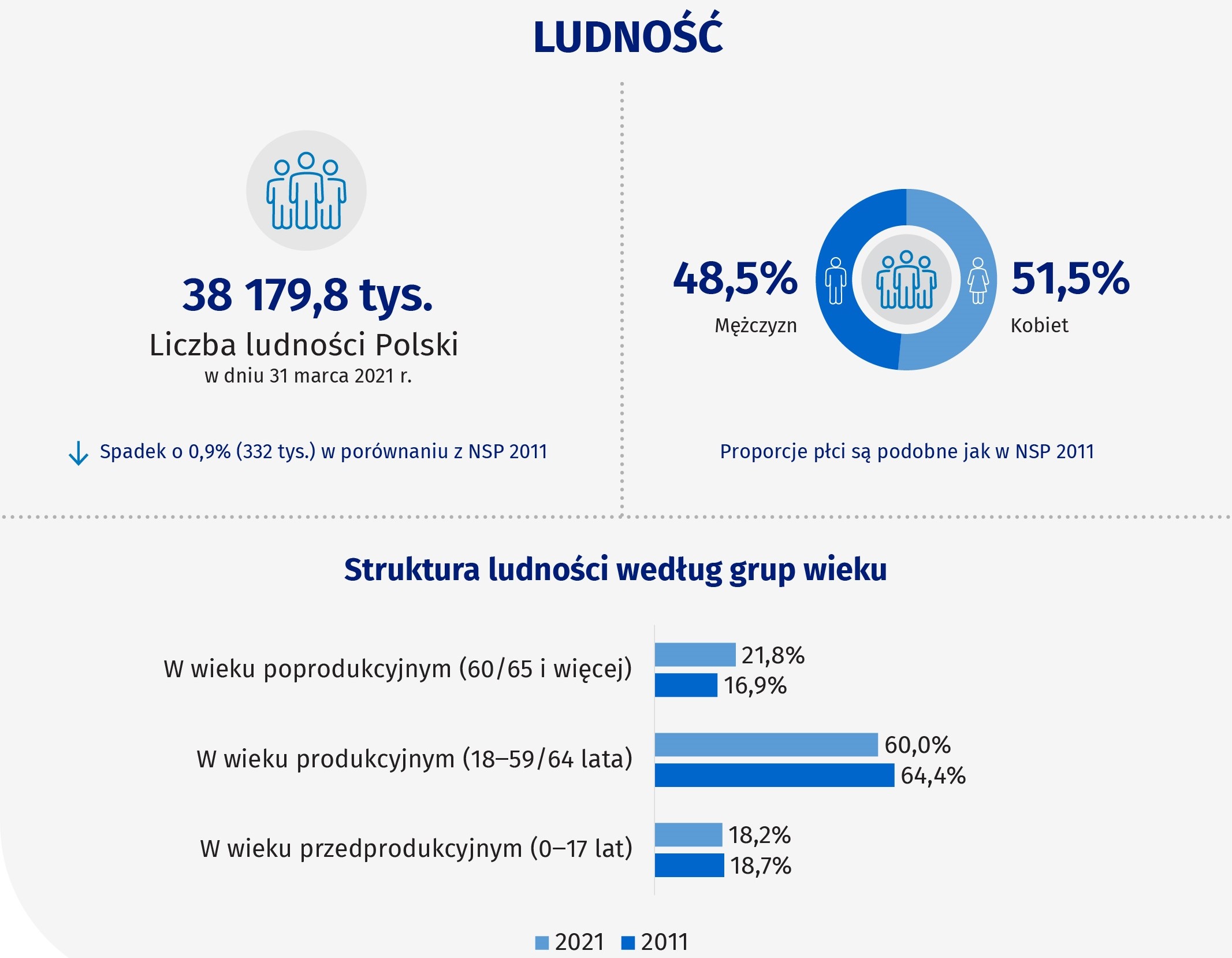Poland’s population is shrinking and ageing, last year’s national census has confirmed, with the prime minister admitting that the country faces “several demographic traps in the near future”.
According to preliminary data released yesterday by Statistics Poland (GUS), a state agency, the country’s population last year was just under 38.18 million. That was around 330,000 (almost 1%) lower than when the census was last conducted a decade earlier.

The figures also showed significant changes in the age structure of Polish society. The proportion of people over retirement age (60+ for women and 65+ for men) rose from 16.9% in 2011 to 21.8% in 2021. The working-age population fell from 64.4% to 60%, while those aged under 18 went from 18.7% to 18.2%.
However, although the size of the population shrank slightly, the number of apartments and houses has increased by almost 13% since 2011, while their total floor space has risen 18.5%. Poland has in recent years been experiencing a building boom.

Commenting on the data during their release at a demographic forum in the presidential palace yesterday, Prime Minister Morawiecki admitted that Poland “will certainly have to face several demographic traps in the near future”, including “a decline in fertility, an ageing population, and a decline in population”.
Both Morawiecki and President Andrzej Duda, however, hailed the census data as a vital tool to inform policy going forward, reports the Polish Press Agency (PAP).
“I hope that the hard statistics will – despite the difficult situation we have at the moment – allow us to…act in such a way as to ensure the best development for Poland,” said Duda.
The Polish government has, since coming to power in 2015, introduced a number of “pro-family” policies that it hoped would boost the fertility rate. However, though the social benefits helped reduce poverty – and proved politically popular – the number of births has continued to fall.
Commenting on the preliminary census data, Mariusz Zielonka, an economist at the Lewiatan business lobby, said that they highlight the fact that “depopulation will be one of the most important economic challenges for the government in the coming years”.
He warned that smaller towns would suffer in particular, and called for the government to introduce policies to enable more women to enter the workforce and for Poland to show “greater openness to immigration”, reports PAP.
In recent years, Poland has, in fact, experienced a wave of immigration unprecedented in the country’s history and among the highest in the EU. By the end of 2019, the government estimated that immigrants made up 5% of the population, and that proportion has subsequently continued to rise.
However, Poland has also been hit particularly hard by the coronavirus pandemic. In 2020, it recorded the highest excess death rate in the European Union, before posting an even higher figure last year.
The census, which was conducted between April and September last year, asked a number of other questions – relating, for example, to residents’ socio-economic status and religion. But these data are yet to be released.
Main image credit: Alex Blăjan on Unsplash. Infographics: GUS press material

Daniel Tilles is editor-in-chief of Notes from Poland. He has written on Polish affairs for a wide range of publications, including Foreign Policy, POLITICO Europe, EUobserver and Dziennik Gazeta Prawna.




















